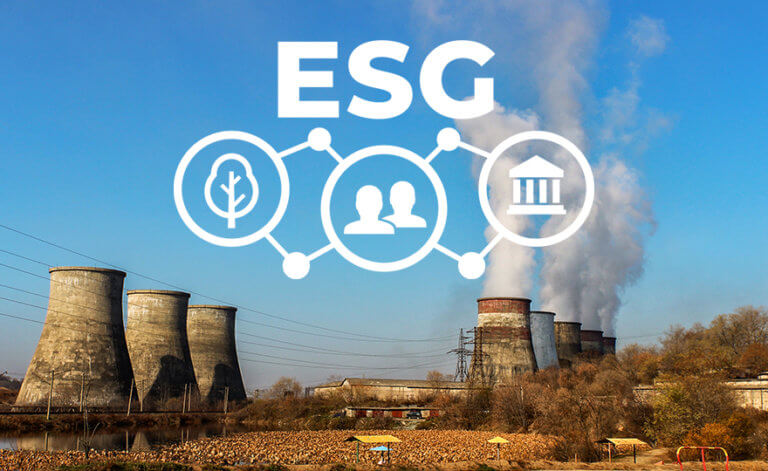With Donald Trump’s ESG curveball, what’s the outlook for APAC liability coverage?
January 23 2025 by Joana Nguyen
With green finance in the spotlight following the return to power of US President Donald Trump, regional experts have told InsuranceAsia News (IAN) that environmental, social and governance (ESG) regulatory changes and stricter disclosure and reporting requirements for larger, especially listed, companies in the Asia-Pacific region have increased awareness and driven demand for the liability cover.
In the week that Trump again started the process to withdraw the United States from the Paris Agreement – the international climate accord first negotiated in 2015 – just hours after taking office, the ESG framework that helps stakeholders understand how an organisation manages risks and opportunities around sustainability issues is firmly on the agenda.
The six biggest banks in the US had all already quit the global banking industry’s net zero target-setting group before Monday’s inauguration, following on from Trump and other senior figures in his Republican party speaking out against finance that aims to achieve better ESG outcomes.
But in APAC, Mark Appleton, global head of liability at industrial carrier HDI Global, expects growth in demand for ESG liability coverage over the next five to 10 years, especially as ESG obligations “continue to develop and crystallise into insurance needs”.
“The fragmented current regulations hint towards a future increasing regional convergence, which is expected to streamline obligations for clients,” he said.
“In the short term, however, this process may create a complex regulatory environment leading to various challenges for our clients.”

“While APAC markets have advanced in handling casualty risks, their experience in the environmental market is somewhat limited. Therefore, we anticipate that growth will be driven more by the requirements under emerging S&G risks.”
Mark Appleton, HDI Global
Chelsea Jiang, chief technical and innovation officer for general insurance for Greater China at Axa Hong Kong and Macau, said that financial institutions need to carry out stress tests on climate change scenarios.
“As markets develop, and regulations in Hong Kong and China change, exposures for directors and officers and boards, especially of listed companies, [now often] include an ESG element,” she said.
“All the ESG risks overlay multiple lines of business and product lines. Instead of creating a new team just to look at ESG, the aspects should be embedded in the knowledge of staff conducting those lines of business.
“This can help create a much more sustainable organisation that can service ESG risks going forward. ESG is very widespread, and you need the entire organisation to be able to push forward on these new ideas and new areas.”
S&G regulations
Appleton added that liability coverage against ESG risks would be driven more by regulations under social and governance (S&G) risks.
“While APAC markets have advanced in handling casualty risks, their experience in the environmental market is somewhat limited. Therefore, we anticipate that growth will be driven more by the requirements under emerging S&G risks,” he said.

“Clients themselves can physically see the changes in climate and temperature, rainfalls and fires. That is having a very direct impact with clients now more concerned about the longevity, value and insurability of investments over time.”
Chelsea Jiang, Axa Hong Kong and Macau
S&G risks in the APAC region are influenced by the cultural and societal differences across its geologically diverse landscape, and increasing sensitivity to these issues can pose challenges in meeting various requirements and compliance needs, potentially raising reputational risk, according to Appleton.
Events related to social risks include violations of labour and employment regulations in various countries, such as Japan’s Labour Standards Act, the 2019 Code on Wages in India, and the 2009 Fair Work Act in Australia.
According to Axa’s Jiang, insurers have been focusing on health, as clients are more aware of the health of their employees and the general public, along with the impact of climate change on health conditions.
“[However,] the environment element, from a general insurance perspective, is having a more direct impact on insurance purchase and demand,” she added.
“Clients themselves can physically see the changes in climate and temperature, rainfalls and fires. That is having a very direct impact with clients now more concerned about the longevity, value and insurability of investments over time.”
Climate regulations increase demand
Climate-related regulations that could stimulate demand include China’s Environmental Protection Law, the Environmental Protection and Management Law in Indonesia, and the National Greenhouse and Energy Reporting Scheme in Australia, according to Appleton.
“They are already impacting business operations and are expected to continue being drivers in the future.”
Last year, HDI Global expanded its environmental liability insurance, with the addition of optional social and governance coverage.
The new solution offers indemnity coverage for environmental incidents and societal breaches, while the focus with governmental aspects is more on providing incident response and support following a contravention of governmental regulations.
“Our current focus for the increased demand in ESG liability coverage in APAC is on Australia, but we are also actively expanding in Singapore, Hong Kong, and Japan,” Appleton added.
“Leveraging our versatile international programs, we can provide local policies in several countries across the region.”
-
Asian clients, suppliers facing choppy waters with cargo market braced to navigate intensifying geopolitical risks
- July 17
Markel's Brook Styles and Wanshi Lin discuss the impact of the conflicts in the Middle East, plus the Russia–Ukraine war and the US tariff regime.
-
Tokyo flooding to bring minimal losses, but highlights growing need to adjust underwriting strategies, flood models
- July 16
While the event may not significantly impact (re)insurance pricing, loss adjusters told InsuranceAsia News that insurers need to respond to increasing attritional nat cat losses.
-
Turbulence ahead for aviation market amid renewed warning over ‘downbursts’
- July 11
Australian airlines face increasing danger as weather risks multiply across the east coast.
-
‘Valuable partners for insurers’: APAC’s thriving MGA market set for significant growth, Guy Carpenter’s Steve Warwick says
- July 10
China, Japan and South Korea have longer-term potential alongside existing key regions as insurers increasingly show interest in this booming route to market.
-
Allianz General | Allianz General combines innovative protection solutions while powering social good to lead Malaysian market
The insurer proactively addresses emerging risks and evolving customer protection needs while giving back to the community.
-
Sedgwick | Asia’s Energy Transformation – Balancing Growth, Risk and Renewables
Energy market presents unique risks, especially in a region which includes China and Japan as well as developing nations like Vietnam and the Philippines.
-
Beazley | Turbulent Waters: the maritime energy transition challenge
Businesses are facing a complex transition to non-carbon energy sources amid a push to achieve net-zero emissions for the marine sector by 2050.
-
Aon | Navigating shifts in the global and Asia insurance markets
Neelay Patel, Aon head of growth for Asia, says the market in Asia is at an ‘interesting stage of the cycle’.

